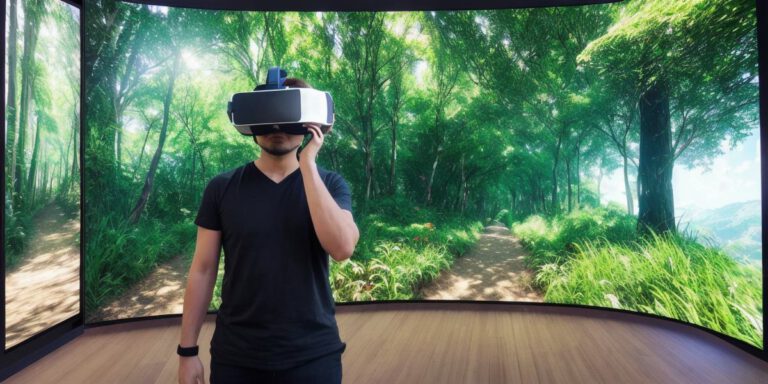VR 3D vs. 360: Pros and Cons for Virtual Reality Developers

Introduction:
Virtual reality (VR) is becoming increasingly popular, with developers creating immersive experiences for users to explore in a 3D environment. However, there are two different types of VR technology that developers must choose from: 3D and 360-degree. In this article, we will discuss the pros and cons of each technology and their implications for virtual reality developers.
Pros of 3D VR Technology:
- Better Control: With 3D VR, developers have more control over the environment they create, allowing them to customize every aspect to suit their needs. This includes controlling lighting, textures, and other visual elements, giving developers greater creative freedom.
- Improved Performance: 3D VR typically has better performance than 360-degree, which can lead to smoother and more immersive experiences for users.
- More Advanced Features: 3D VR often includes advanced features such as physics engines and AI, allowing developers to create more complex and interactive experiences.
- Greater Flexibility: 3D VR allows developers to create a wide range of experiences, from simple games to complex simulations and training programs.
Cons of 3D VR Technology:
- Limited Field of View: The limited field of view in 3D VR can make it difficult for users to navigate the environment and see what is happening around them.
- Higher Cost: 3D VR technology often requires more expensive hardware, which can limit its accessibility to smaller developers or budgets.
- Increased Development Time: Creating 3D VR experiences can be time-consuming, requiring a high level of skill and expertise.

- Lack of Standardization: There is currently no standard format for 3D VR technology, making it difficult to create interoperable experiences that can be shared across different platforms.
Pros of 360-Degree VR Technology:
- Greater Immersion: 360-degree VR provides a greater sense of immersion by allowing users to explore the environment in a more natural way, looking around and interacting with objects in the space.
- Lower Cost: 360-degree VR technology is generally less expensive than 3D VR, making it more accessible to smaller developers or budgets.
- Faster Development Time: 360-degree VR experiences can be created using existing tools and software, reducing development time and allowing developers to quickly iterate on their ideas.
- Greater Accessibility: 360-degree VR technology is compatible with a wide range of devices, making it accessible to a larger audience.
Cons of 360-Degree VR Technology:
- Limited Control: With 360-degree VR, developers have limited control over the environment they create, as users can look in any direction they want. This can make it difficult for developers to customize the experience to their needs.
- Lower Performance: 360-degree VR typically has lower performance than 3D VR, which can lead to a less immersive experience for users.
- Limited Interactivity: 360-degree VR experiences are often more passive, with limited opportunities for user interaction.
- Lack of Advanced Features: 360-degree VR technology does not typically include advanced features such as physics engines or AI, limiting its capabilities compared to 3D VR.
Conclusion:
In conclusion, both 3D and 360-degree VR technologies have their pros and cons








